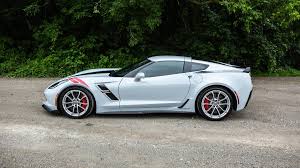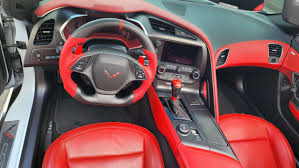c7 corvette the Chevrolet Corvette C7, a champion worldwide of American games vehicles, addresses a strong skip ahead in format and age. Despite widespread challenges, General Motors (GM) effectively crafted a car combining contemporary capabilities and superb performance. Here’s an in-depth observation of the development, design, and technological innovations of the C7 Corvette.
Table of Contents
Development Challenges
The Corvette C7’s adventure became marked by monetary and strategic hurdles. In 2007, GM confronted intense economic difficulties that almost jeopardized the Corvette software. The economic disaster and the danger of financial disaster necessitated a more conservative method. The focus shifted from progressive adjustments to evolutionary enhancements, ensuring the Corvette remained feasible despite adapting to the challenging financial panorama.
Design Innovations
Under the management of Tom Peters and Ed Welburn, GM persisted and added the 2014 C7 Corvette Stingray with a new layout. The C7 has an effective 6.2L LT1 V-eight engine, turning in 450 horsepower and 450 lb.-ft. Of torque. This engine contains advanced technologies, including direct fuel injection and active fuel management, improving each engine’s performance and efficiency.
The transmission gadget was also upgraded with the TREMEC TR 6070 seven-velocity manual, equipped with Active Rev Matching and an optionally available six-pace automatic transmission. This combination guarantees a clean and responsive driving experience on the song or the street.


Driver Experience
The C7 Corvette offers customized use through its Driver Mode Selector. This machine affords five distinct modes: Weather, Eco, Tour, Sport, and Track. Each mode adjusts diverse automobile settings to shape one-of-a-kind using conditions and options.
The interior of the Corvette C7 was redesigned to enhance driver engagement. It functions as advanced presentations, brilliant substances, and a preference among GT and Competition seats. These upgrades aim to create an extra immersive and fun driving experience.
Advanced Technology
Technological improvements in the C7 Corvette are focused on improving the motive force’s experience. The indoors consists of configurable displays, a heads-up display, and a media interface with gesture recognition. These functions allow drivers to access records and controls without losing attention on the road.
Performance and Comfort
The C7 Corvette is engineered to offer a balanced driving experience. It is appropriate for everyday commuting, lengthy-distance tours, and high-performance tuned driving. Attention to elements in materials and design ensures that the Corvette offers comfort and a sturdy connection between the motive force and the automobile.
Performance
The Chevrolet Corvette C7, a pinnacle of American sports activities and automobile engineering, represents an ideal fusion of modern-day era and performance excellence. As one of the most anticipated motors in the Corvette lineage, the C7 sets new requirements with its superior features and meticulous layout. Here’s a more in-depth look at what makes the Corvette C7 an engineering wonder.
Revolutionary Shape Memory Alloy Wire
One of the standout improvements inside the C7 is using a form reminiscence alloy cord, a primary tool for producing automobiles. This advanced material is hired as a cabin vent inside the shipment place, replacing a traditional motorized actuator. When the hatch opens, an electrical contemporary generates heat that contracts the wire, activating a lever to open the vent. This technique enables the discharge of cabin strain, making it easier to shut the hatch. Once the hatch is closed, the current is cut off, the twine returns to its unique shape, and a spring closes the vent, preserving the finest cabin temperature.
Enhanced Rear Weight Bias
The C7 is excellent for its rear weight bias, a trait it stocks with the most effective Corvette model—the C2. While Chevrolet claims a balanced 50/50 weight distribution, the C7’s actual weight distribution is slightly rearward, with 50.6% of the weight over the rear axle. This configuration enhances the car’s management and balance, creating a more dynamic user experience.
Enhanced Rear Weight Bias
The C7 is excellent for its rear weight bias, a trait it stocks with the most effective Corvette model—the C2. While Chevrolet claims a balanced 50/50 weight distribution, the C7’s actual weight distribution is slightly rearward, with 50.6% of the weight over the rear axle. This configuration enhances the car’s management and balance, creating a more dynamic user experience.
Enhanced Rear Weight Bias
The C7 is excellent for its rear weight bias, a trait it stocks with the most effective Corvette model—the C2. While Chevrolet claims a balanced 50/50 weight distribution, the C7’s actual weight distribution is slightly rearward, with 50.6% of the weight over the rear axle. This configuration enhances the car’s management and balance, creating a more dynamic user experience.
NASA-Developed Aerogel Insulation
The C7 employs Aerogel insulation on the transmission tunnel to tackle warmness management troubles. Developed through NASA for space fits, Aerogel is surprisingly lightweight and powerful, insulating 39 instances higher than the best fiberglass. This cloth, composed of 99.8% air, ensures that the cabin stays cool and comfy, no matter the proximity of the exhaust gadget.
Targeted Pricing Strategy
Chevrolet set a goal to keep the C7’s base rate around $50,000 from the start. To achieve this goal, the final base price was set at $ fifty-one 995, a modest increase of $1 four hundred over the preceding model. Despite incorporating advanced technology and new features, the Corvette C7 maintains an aggressive charge point, reflecting Chevrolet’s dedication to delivering value.
Exceptional Fuel Efficiency
The C7 is distinguished as a 30-mpg supercar, a remarkable achievement for its elegance. With the Eco mode engaged, the Corvette C7 achieves as much as 30 mpg on the toll road. This efficiency is attributed to advanced technology along with direct injection, active fuel control, variable valve timing, and good-sized engine computational evaluation, which together decorate gasoline economic systems without compromising performance.
Upgraded Brake Rotors
The C7 features new brake rotors with shallow grooves, changing the cross-drilled rotors utilized in preceding fashions. This alternate addresses cracking problems reported with drilled units while preserving advanced brake sense. The vented discs ensure that gasses are successfully expelled, enhancing braking overall performance and reliability.
High-Performance Michelin Tires
The Corvette C7 is outfitted with Michelin Pilot Super Sport ZP tires, developed in close collaboration with Michelin over 36 months. These tires are designed with superior PC fashions and rubber mixes, like those used in expert racing. The result is a tire that offers splendid grip and sturdiness, tailor-made especially for the C7’s overall performance traits.
Asymmetrical Sidewalls for Enhanced Performance
Continuing the generation added with the ZR1 run-flat radials, the C7’s tires have characteristic asymmetrical sidewalls. The internal partitions are thicker and stiffer, complementing comfort and cornering adhesion. This design lets the tires deliver superior performance, whether or not on the tune or the road.
Conclusion
The Chevrolet Corvette C7 exemplifies the suitable blend of innovation and performance. From its progressive materials and advanced technologies to its astounding gas efficiency and coping with competencies, the C7 is a testament to Chevrolet’s engineering excellence. As an end result, it maintains the Corvette legacy and sets new benchmarks in the sports activities automobile world.
Pingback: Engine Type NYT BrandIg Nite